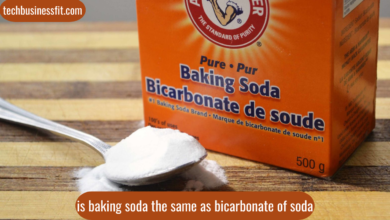How Do Heavy Metals Enter Your Baby’s Food?

As a parent, you want only the best and safest for your growing baby. But did you know that baby food could expose them to toxic heavy metals hiding in some of the most common infant foods? In this article, we’ll reveal the hidden dangers of heavy metals.
Heavy Metal Risks in Baby and Toddler Foods
Heavy metals can enter the environment through natural processes like geological weathering, forest fires, and volcanic eruptions. They also come from human activities, such as emissions from power plants and factories.
As a result, the raw materials used to make baby and toddler foods may contain several toxic elements in high amounts. The fact that metals do not degrade over time like other pollutants makes them especially dangerous. Just like how organisms eat one another, they build up in sediments and biomagnify their way up the food chain. Understanding such complex processes requires thorough research, similar to the careful analysis involved when students choose to diplomarbeit schreiben lassen (having a diploma thesis written).
Further processing of raw materials into foods, through steps like adding inorganic salts, could increase the risks of toxic metal exposure.
Grains, especially rice, tend to take up higher levels of environmental heavy metals from contaminated water and soil. In polluted regions, rice contains around ten times more inorganic arsenic than other foods.
Rice is unique among major crops that are grown in flooded fields. This allows more arsenic to enter the plants. Rice and sweet potatoes also commonly contain lead. Processed “kids’ meals” and grain-based foods like rice, quinoa, wheat, and oats frequently contain cadmium as well.
Rice is a key ingredient in baby rice cereals. After weaning from breastmilk or formula, a child’s rice consumption grows dramatically. This leads to much higher potential exposure to heavy metals in baby foods.
One study found infants’ urine samples had 4.5 times more inorganic arsenic and related compounds after weaning compared to before. Surveys of arsenic and other heavy metals in rice-based baby and toddler foods have raised major concerns.
Studies show diluting rice with other gluten-free grains and using lower-arsenic rice lowers exposure. Median arsenic in multigrain cereals containing some rice was 9.75 micrograms/kg, under the EC’s drinking water standard.
Baby foods may contain heavy metals from more than just grains. Some manufacturers use vitamin mixes, enzymes, and spices like cinnamon, cumin, and turmeric that test positive for metals. Strict limits are needed to protect developing children.
The Dangers of Heavy Metal Contamination in Infant Nutrition
Young children consume various foods daily, and heavy metal exposure can accumulate over time from multiple sources. This is according to Eric Boring, PhD, a chemist who tests baby foods. She told Consumer Reports that feeding daily portions near limits leaves little room for additional exposures.
Prolonged intake of heavy metals may raise the risk of developmental and behavioral issues in early childhood. This includes lowered IQ and conditions like ADHD or autism, as key organ systems are still maturing. “Early development is a sensitive period,” notes Maya Deyssenroth, PhD, an environmental health expert.
While the results are concerning, experts emphasize the risk stems from repeated exposures rather than single instances. Occasional servings of foods with higher levels generally pose little threat. However, rotating a variety of foods is advised.
A recent study by NIH examined heavy metal presence in 22 samples of infant foods and formulas available in Ghana’s Wa Municipal Area. The analysis focused on arsenic, cadmium, chromium, mercury, manganese, nickel, lead, and antimony. While some metals were found to be within safety limits, others exceeded established thresholds in certain samples.
The research evaluated infant dietary exposure against provisional tolerable daily intake (PTDI) values set by health organizations. It also assessed potential non-carcinogenic health risks using the target hazard quotient (THQ) and cumulative toxic effects through the hazard index (HI).
Results indicated that arsenic posed the most significant non-carcinogenic risk, with a majority of samples showing concerning THQ values. The cumulative risk assessment suggested that frequent consumption of these foods could potentially lead to adverse health effects in infants.
Furthermore, the study found that cancer risk values exceeded acceptable limits, indicating possible long-term health risks associated with prolonged consumption of these infant foods.
The Rise of Toxic Baby Food Lawsuits
Growing concerns over heavy metal concentrations in baby foods have compelled victims to file the toxic baby food lawsuit targeting major manufacturers. To handle similar claims more efficiently, cases have been consolidated into multidistrict litigation in federal court.
Named in the toxic baby food products liability litigation are Beech-Nut, Hain, Gerber, and Nurture – seeking compensation and reforms. Qualifying health conditions include autism, ADHD, developmental delays, and neurological or behavioral issues, given scientific links to metal exposures during critical developmental periods.
This focused approach to the litigation allows for stronger legal arguments by streamlining claims around substantiated health impacts. As per TorHoerman Law, individuals across the US harmed by toxic baby foods now have an organized process to pursue legal recourse jointly.
In response to multiple reports about the dangers of contaminants, proposed federal legislation seeks to address this issue. It aims to enforce stricter FDA regulations and set acceptable metal levels in baby foods.
As lawsuits continue, regulations may be strengthened to better protect vulnerable children from hazardous ingredients in products meant to support growth and nourishment. Stakeholders are striving to promote the health and well-being of babies through legal and policy reforms.
FAQs
1. Do eggs contain significant levels of heavy metals?
A: Recent studies using advanced spectroscopic techniques have revealed concerning results regarding heavy metal content in poultry products. A substantial portion of analyzed egg components, including white and yolk, were found to contain lead levels exceeding internationally recognized safety standards. This suggests a need for increased awareness and potential dietary adjustments.
2. What strategies can help minimize heavy metal exposure in infant diets?
A: Diversifying your baby’s diet is crucial in reducing overall heavy metal intake. Even when using organic or homemade options, it’s essential to vary food sources. Consider using a variety of grains, like quinoa, barley, and oats, in your baby’s meals rather than just rice-based cereals.
3. Which type of rice is most beneficial for children’s diets?
A: Whole grain varieties offer superior nutritional benefits when adding rice to your child’s meals. This applies whether rice is served as a standalone dish or used as an ingredient in other foods. These options provide additional fiber, protein, and essential micronutrients compared to refined alternatives. By consistently choosing whole-grain rice products, you can help establish healthy eating habits and enhance your child’s overall dietary quality.
As this article has shown, multiple studies have found toxic metals like arsenic, lead, and cadmium in many popular baby and toddler foods. These harmful substances are present at concerning levels. Therefore, babies and toddlers may face unnecessary health risks through no fault of their own or their caregivers.
Through legal action, policy changes, and increased consumer awareness, we can put pressure on manufacturers and regulators. This will ensure they take the well-being of little ones seriously. Our children’s futures depend on the actions we take to protect them from harmful chemicals during these crucial early stages of growth.
